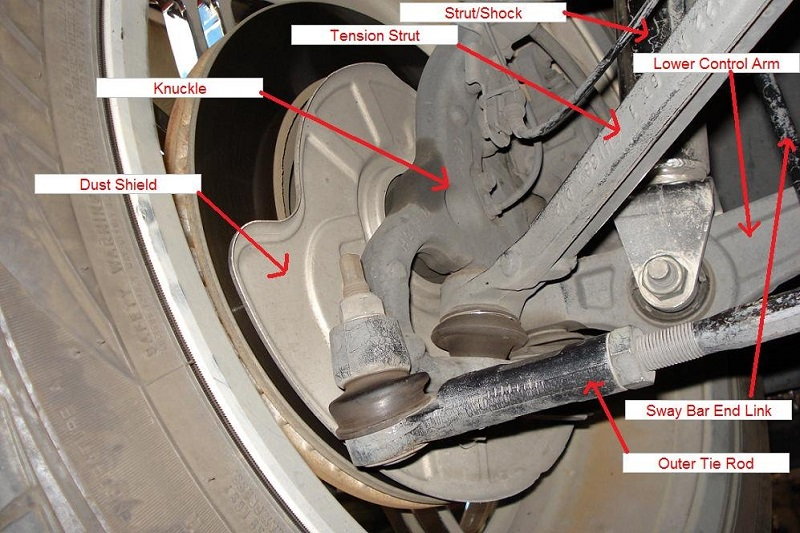Dodge Ram 1994-Present: Suspension Noise Diagnostic Guide
The suspension system on the Dodge Ram consists of a great deal of components. At some point, noise will occur. Learn how to diagnose it here.
This article applies to the Dodge Ram 1500 2nd, 3rd, and 4th Generation (1994-Present).
If the Dodge Ram is famous for one thing, it's being durable. It can tow and haul mass amount of loads. Depending on the weather and the driving conditions, suspension parts could dry up, get used up, and simply need changing. Although, the diagnostic part is a double-edged sword. If you know the sounds, it's easy and fast to diagnose the issue. But if you don't, you can end up looking forever. Here are some common sounds that occur when something is wrong with your suspension system.

Material Needed
- No tools needed
Step 1 – Check the bolts
You could have loose bolts.
First, locate the general area where the noise is coming from. Slide under your truck and check for any loose bolts. Check your sway bar, strut bar, upper and lower control arms, tie rod ends, as well as ball joints. If you discover that one of these components is loose, check your owner's manual for the proper torque to tighten it. Loose bolts can create a clunking noise.

Step 2 – Check the bushings
They may be dry, cracked, worn out, or completely missing.
Again, slide under the truck to visually inspect all the bushings and look for any cracks or dryness. Check the control arms, strut bar, and sway bar end links. While you're down there, it never hurts to grease up all the bushings to avoid any issues in the future. Bad bushings can create a range of noises depending on the severity of their conditions. You can hear creaks if they are dry, grinding if they are missing, and everything in-between.

Step 3 – Check the shocks and coils
They may be broken.
If your shocks are blown, you will probably feel like your truck is unusually bouncy. You can also check them by looking for an oil leak on the actual shock. Check the coil springs for any cracks or breaks. If you discover any problems with the shocks or the springs, try to replace them as quick as possible to avoid any further damage. Bad springs and coils can create a popping sound, creaking sound, or grinding sound depending on their conditions.

Step 4 – Check the motor mount
It might be broken.
Slide under your Ram and look on the frame where the engine sits. If you have a broken engine mount, you should be able to tell by the cracks or the missing pieces. If you happen to have a broken engine mount, it's recommended you take it to an auto shop. Otherwise, you can use a jack to raise the engine while you replace the mount. A bad motor mount will most likely sound scary as it will sound like heavy popping.

It's rather hard to hear a certain sound and automatically know what the problems is. Always look where suspension components meet. Look at the end links, the bushings, or anything visually unappealing. If you see cracks, leaks, shaved metal, or anything that looks suspicious around the area you hear the noise from, it is probably the culprit. Some suspension components can be simple to replace (like shock absorbers), while others, such as types of bushings, can be very difficult. Research the part you need replacing and make the decision based on your personal ability.
Related Discussions
- Suspension Clunk - DodgeForum.com
- Suspension Knock - DodgeForum.com
- Suspension Noise - DodgeForum.com






